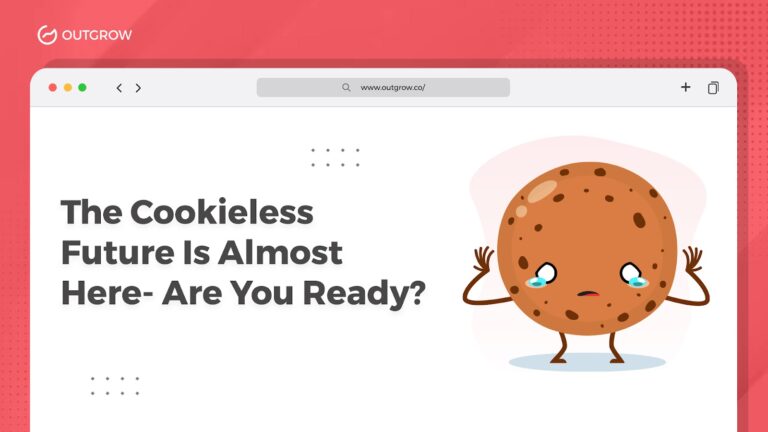What Is Growth Hacking? 20-Minutes Course for Beginners
Table of Contents
From the time Sean Ellis coined the term growth hacking, interest in growth hacking as a marketing strategy has only seen an upward trend.
Growth hacking is a legitimate strategy used by businesses to reach exponential growth on a limited budget.
And, this growth hacking course is meant to cut through the clutter and set you up for a journey in understanding and implementing growth hacking strategies better.

Source: Google Trends
Growth Hacking Course: Chapter 1
What Is Growth Hacking?
Sean suggested that companies that see “growth” as their north star are on the path to success.
According to him, traditional marketing was qualitative in nature. And so, one couldn’t see the impact of marketing efforts on the revenues. They just had to trust the process without questioning it.
That’s when growth hacking came into the picture.
Growth hacking in its essence is acquiring as many users or customers as possible while spending as little as possible. It aims to show tangible results by keeping continuous experimentation and data at the heart of any strategy. This way every experiment brings us a step closer to growing the market for a product or service.
Growth hacking = Programming + Marketing + Data Analysis
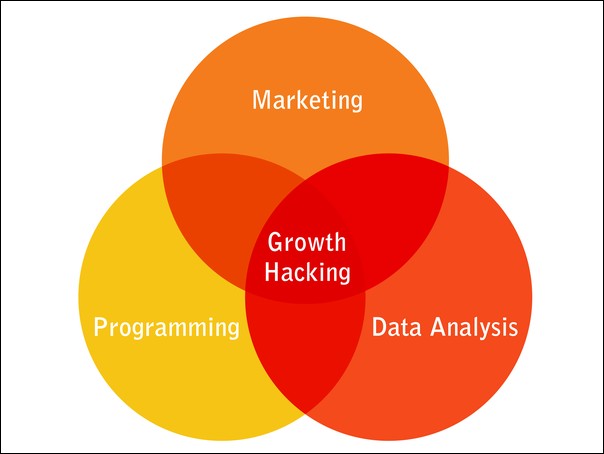
Source: Omnikick
Check out this video by Neil Patel to learn more about the basics of growth hacking for digital marketers.
Why Is Growth Hacking Important?
Growth hacking involves data-driven experimentations with existing resources and finalizing those experiments that show desired results. A specimen result can be — increased conversion rates due to smooth onboarding.
Thus, growth hacking techniques are more reliable and less expensive. For startups that are on a “shoestring” budget, growth hacking strategies can be a savior.
And this is where a growth hacker steps in. Which is the next chapter in this growth hacking course.
Growth Hacking Course: Chapter 2
Who Is a Growth Hacker?
A growth hacker is a person who strives to achieve growth. Their focus is solely on running experiments that can drive growth. Depending on the data that they derive from these experiments, they stick to the formula or hop on to the next growth hack.
So what makes a good growth hacker?
- An analytical mindset. Aspiring growth hackers must be comfortable with making sense of all the consumer insights available to them.
- A penchant for continuous learning. Growth hackers essentially take a risk every time they experiment with a hack. This requires the grit to try and fail and be unafraid of the consequences.
- The ability to take responsibility for the actions. It is imperative that a growth hacker not only test different hypotheses but also be accountable for the consequences of such testing.
- A person with a creative bent of mind. Creativity is at the heart of marketing and so it is arguably the most important trait for someone working at the intersection of marketing and product.
- Someone who can work on a tight budget. This is very crucial since growth hacking is supposed to be a low-cost strategy and hence a better alternative to traditional marketing – which involves investing huge sums of money on a project that makes any experimentation nearly impossible. So, if you want to know – “What’s the difference between growth hacking and traditional marketing?”, then this is it.

Source: GrowthHackers
That pretty much sums up all the skills you need to become a successful growth hacker.
Now that we have covered the basics, let’s move on to some of the most crucial aspects of the growth hacking course.
Growth Hacking Course: Chapter 3
6-Step Plan for Each Stage of the User Funnel
The growth hacking funnel divides the entire growth hacking process into different stages. For this, we use something known as the AAARRR metric. This metric lays down the typical progression of a buyer from being lead to a final consumer.
It involves the following stages :-
I. Awareness
In this stage, your target audience is getting aware of your presence. This is a prerequisite for any further contact. The aim is to create significant awareness such that the relevant audience is pushed down the funnel and drop-outs at every stage are reduced.
The awareness stage calls for growth hacking strategies that put you in front of your target audience.
This includes the paid engine of growth. Growth engines (a concept that Eric Reis talks about in his book “The Lean Startup” are drivers of growth. Choosing an engine would determine the kind of growth you expect from your startup.
The paid engine of growth is relevant in the awareness stage as though that you are buying and attracting relevant leads. These include –
- Paid ads on social media, google display ads, or search ads that help in ensuring the top of the mind presence
- Paid outdoor advertising – as they have high virality attached to them
- Influencer marketing campaigns – as they engage your target audience
- Affiliate marketing campaigns because they add credibility to your product offering
- Events and conferences – as they are a great place to network and promote your product
- Personalized landing pages – as they allow you to show different landing pages to different accounts
The awareness stage also includes unpaid strategies like –
- Search engine optimization and search engine marketing
- Pre-launch marketing on platforms like ProductHunt to get hold of early adopters and be a part of a community
- Guest posting to expand your reach and audience base
II. Acquisition
Now that your target audience knows that you exist, the idea is to have the first point of contact with them. This includes providing value in exchange for contact information.
Growth hacking strategies in the acquisition stage include –
- Attractive newsletters to engage with your email list regularly
- Podcasts to offer value and to engage with renowned personalities in your niche
- Retargeting ad campaigns to stay on top of the minds of your target audience
- Lead magnets like interactive content – quizzes, and calculators to get qualified leads
- Conversion optimized landing pages to see record signups
III. Activation
At this point, your target audience is acquainted with you. They have signed up for your newsletter or are clicking through on your retargeting ads. They are aware of your product offering. Now you want them to try it.
For some businesses, this point may arrive early while for others it might take a while for their leads to reach this stage. Here are some growth hack ideas to combat that –
1. Your target audience is using a competitor’s product and doesn’t know whether to switch. In this case, you can highlight why your product is better without putting the competitor down.
- Use interactive surveys to understand the gaps left by your competitors
- Offer insights on how you can better solve the needs of your user base.
2. Your target audience needs your product and is not one of your competitors’ clients. This is a great place to be in because you’re sure that there is a need. All you have to do is develop a strong “want” for your product in them.
- Ebooks or blog posts that offer value and give a glimpse of your product offering
- Send demo videos or hop on a call and explain how your product can address their concerns
- Gamify the onboarding process by making it seamless and engaging
- Make signups frictionless to avoid drop-outs
IV. Revenue
The revenue stage in the growth hacking funnel is the one where you turn these qualified leads into active paying customers. Following growth hacking strategies will work in this stage –
- Discounts – student, NPOs, small business
- Freemium models
- Customized pricing plans based on client needs. This can be done by offering a recommendation quiz or calculator that suggests what plan your client should go for based on their unique needs.
For example, have a look at this Fitness Plan recommendation quiz. It takes into account all the requirements of the customers to suggest the right plan suiting their preferences and budget.
Source: Outgrow
V. Retention
Retention is of utmost importance since it’s way more expensive to get a new lead than to retain an existing one. In fact, the probability of selling to an existing customer is 60-70%. Whereas, it is 5-20% in the case of new prospects. So, make sure you nurture the existing leads by getting all hands on deck.

Source: Marketoonist
Growth hacking strategies for the retention stage will include –
- Interactive content – using surveys to gauge customer satisfaction and chatbots to resolve client queries 24*7
- Extended trial
- Video testimonials to add credibility
- Product walkthroughs
- Open lines of communication at all times
Given below is a survey template by Outgrow that you can use to gauge customer satisfaction in the retention stage.
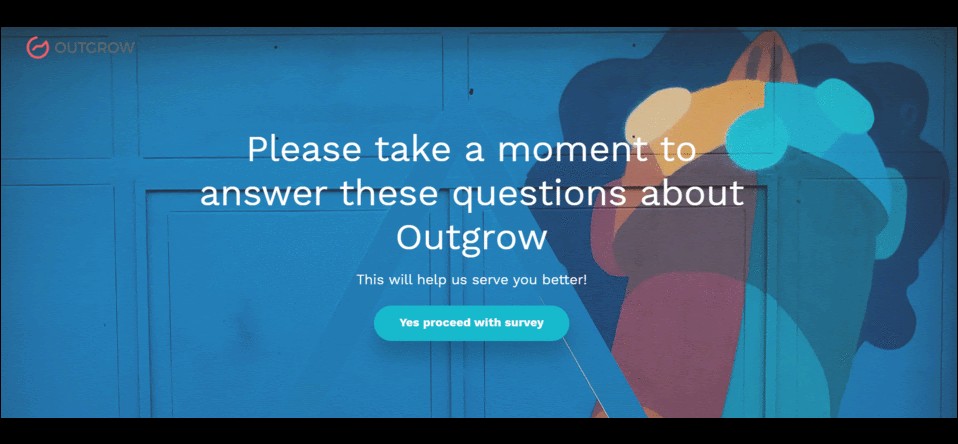
Source: Outgrow
VI. Referral
The importance of word-of-mouth marketing isn’t hidden from us. 92% of consumers trust referrals from people they know. And so, your aim should be to build a community around your product. These are people who would recommend your product without a second thought.
So how do you get referrals?
- Build a referral system.
- Conduct giveaways in exchange for testimonials and referrals
- Offer discounts or free services in exchange for referrals
Want to read about these amazing strategies in further detail? We have covered it for you in a separate blog here:
While all these are great ways to boost growth, remember that a good product with a relevant market and remarkable service trumps all of these. So, strive to achieve that and you’d be receiving referrals left, right, and center.
How are you liking the growth hacking course so far? Next up are some incredible case studies that will set you up for your growth hacking journey!
Growth Hacking Course: Chapter 4
Case Studies
1. Tinder – Gamifying the Dating Scene
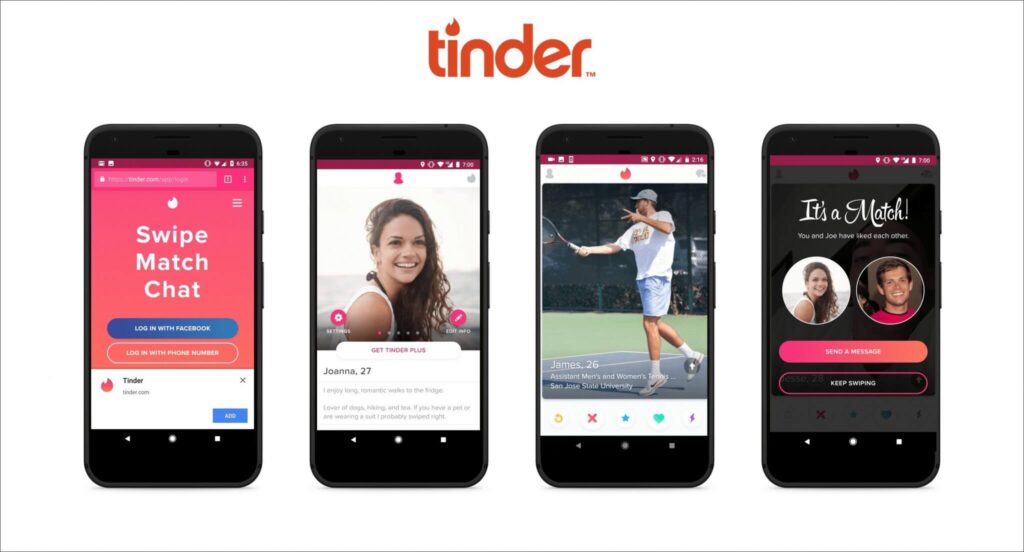
Source: Vietnam Insider
The idea of meeting your potential partner through friends and family was common some 20 years ago. But today, it’s all about swipe left and swipe right.
Dating apps like Kiss.com and Match.com existed before Tinder took the industry by storm.
But what did Tinder do differently?
(a) Gamifying the “matching” process
Tinder through its iconic “swipe left” and “swipe right” made the entire process addictive.
There was an adrenaline rush seconds before every swipe and every match which got people hooked. This led to a point where the very act of swiping became as rewarding (maybe even more so if you have a bad dating experience, lol) than what the app was originally meant for – going on dates.
(b) Tackling rejection made easy
Tinder’s “double-blind opt-in” feature allows for someone to message only when both the parties “like” each other. This avoids the flood of messages on women’s profiles – a problem that OkCupid or Match.com couldn’t tackle.
Tinder was granted a patent in the dating category by the US Patent & Trademark Office as they found these growth hacks so innovative.
(c) Network effects
Network effects are basically the benefits that a growing network of people can create for a product or service. Tinder recognized this and introduced a mind-blowing growth hack – The Matchmaker.
Through Matchmaker – existing Tinder users could introduce two friends by sharing an individual’s profile with their friends who can then continue the conversation on the app. Masterstroke!
Tinder initially monetized on additional features such as correcting a wrong swipe, in-app purchases, and paid promotions. But eventually, they went on to launch a premium service – TinderPlus.
2. Spotify
Spotify showed up at a time when only Pandora and iTunes offered music streaming services. While being an early adopter worked, what helped more was how Spotify plugged the gaps left by these streaming platforms. It’s their brilliant product, continuous innovation, and several big and small growth hacks that led them to become a market leader in the music streaming industry.
(a) Product Features that Plugged the Gaps
Spotify offered unlimited streaming for $10 a month. No need to pay to hear one album or one song again and again. All songs on your fingertips all day, every day. This was a no-brainer.
Secondly, its users can add new songs to the app thereby creating their own playlists. No need to move out of the app to listen to your local college band.
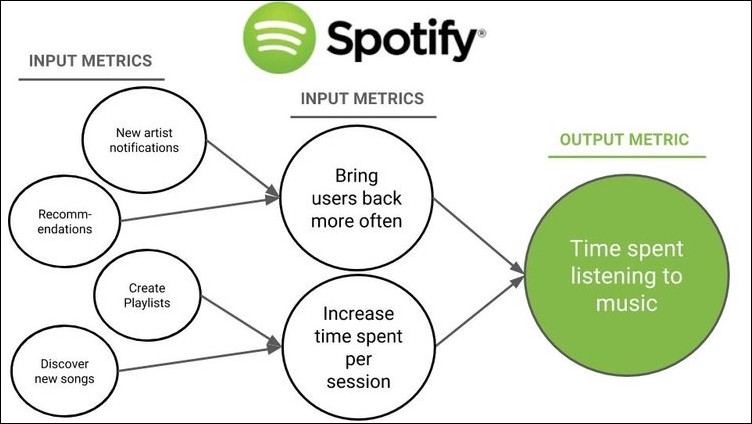
Source: Neil Patel
(b) Growth hacking using data analysis
Yes, that’s how Spotify surprises you with songs that you end up loving. It offers these recommendations using machine learning algorithms.
(c) Freemium model
A freemium model has been a game-changer for Spotify. And rightly so. This model allows you to listen to unlimited songs albeit with ads in between which can bug you enough to get a premium plan for $9.99. Making it a great hook. Spotify also offers a student plan, a duo plan, and a family plan which also consists of a separate kids app (how adorable????).`
Spotify is spread across 92 markets today. And it offers plans that work best for those audiences. For example – In India, Spotify offers an INR7 (~ 10 cents) plan for a day. That’s an interesting way to penetrate a market that has historically never paid for music.
(d) Spotify Wrapped
Spotify playlists could be shared on Facebook, thus allowing people to see what their friends and acquaintances were listening to. This created a desire to join the bandwagon and tell everyone what you’re listening to at a point. So while their real growth hacking strategy was allowing cross-sharing, the growth hacking strategy that really added to that was the network effect. As more and more people shared their favorite songs on social media – more and more people felt the FOMO – leading to more downloads.

Source: Awario.com
Spotify consistently pops up every year for its marketing campaigns. They launched campaigns like – Music for Every Mood, 2018 Goals, Cosmic Playlist, and many more.
3. Barões Digital Publishing
Interactive content creates twice the engagement as static content. And so, this is one growth hacking strategy that should definitely be on your 2021 list.
Barões Digital Publishing is a Brazilian company that offers digital publishing strategies for brands. They were looking for a tool that could offer them better conversion rates. Enter – interactive Outgrow quizzes!
Barões Digital Publishing used Outgrow to create an outcome quiz for “Which city should you move to in 2020?” They developed this quiz for one of their clients QuintoAndar – one of Brazil’s unicorn startups.

Source: Outgrow
The quiz contains the right number of questions and uses attractive images to make it visually appealing. You can either enter your email address or log in through Facebook to start the quiz.

Source: Outgrow
Results: 22,000 leads and almost 63,000 visits + a conversion rate of almost 35%
4. Airbnb
Airbnb was founded as 2 designers couldn’t afford their San Francisco apartment rental. They decided to let out their lodge by building a website – Air Bed and Breakfast (Airbnb). Given below are growth hacking strategies that led to Airbnb’s huge success.
Piggy-backing
What turned out to be a pivotal moment in Airbnb’s journey to becoming a household name was a “hack” that integrated Airbnb listings with Craiglist’s listings.
Craigslist is an advertisement website with listings under multiple categories, houses for sale, jobs, gigs, etc. Airbnb used an internal loophole and started listing their properties on Craigslist.
With that, people who listed on Airbnb had the opportunity to post them to Craigslist as well—even though there was no authorized way from Craigslist to do so.
Airbnb, basically, is piggy-backed on the huge reach and consumer base of Craigslist by a small albeit unethical growth hack.
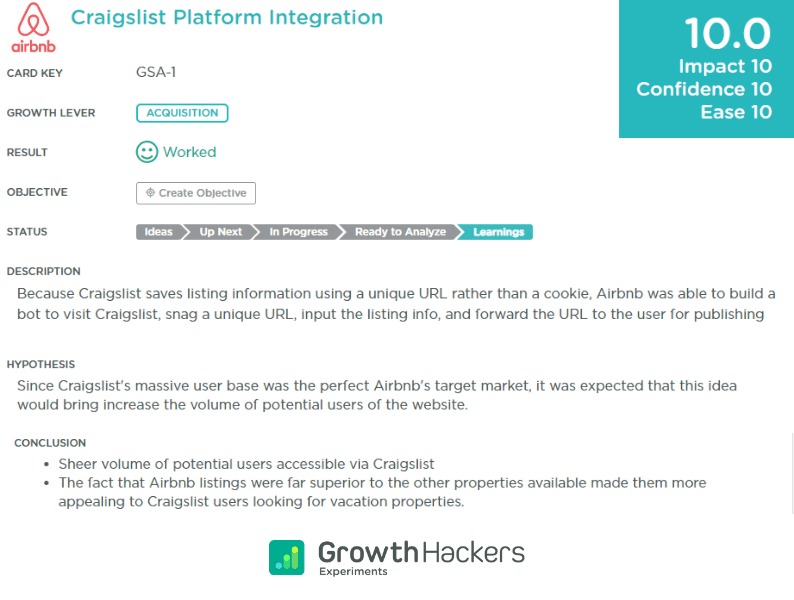
Source: GrowthHackers
Product offering
Airbnb changed the travel experience. Their focus became to provide a local experience – understanding cultures, and traditions by living with the families and the local population.
They understood the risks involved in letting a stranger stay in someone’s home and so they introduced a Host Guarantee that every property would be insured up to $1,000,000 for damages.
Airbnb also provides professional photography services so the images are visually appealing raising the probability of them getting rented out.
User-generated content
Traveling is a very attractive industry. Airbnb’s social handles thrive on user-generated content that work best for this $ 200 bn industry.

Source: Instagram
While we are discussing Airbnb-ing, how about you check out this calculator on how much you’d make by Airbnb-ing your property.
Hold on tight as we move on to the next chapter of this growth hacking course. (we are spilling the tea here!)
Growth Hacking Course: Chapter 5
Growth Hacking Tactics You Can Start Using Today
In this chapter, we offer some tactics that have shown proven results and that you can start applying today!
1. Limit Cart Steps
The cart step comes closest to converting a lead. One growth hacking tactic that works wonders in this stage is to limit the information a buyer has to provide on this step. So if you provide a physical product – make the address section intuitive to fill in the city automatically on inserting the pin code.
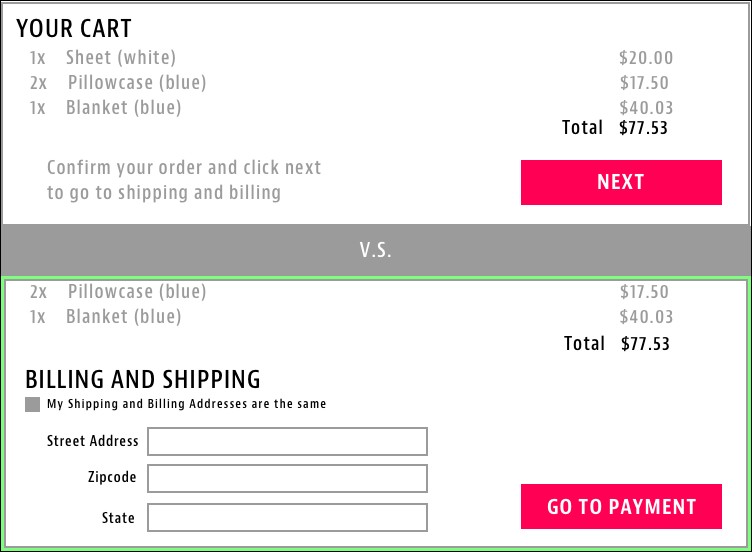
2. Gamify Social Media Stories
Instagram, Facebook, and now LinkedIn stories are incredible growth hacking tools to be in your audience’s line of sight at all times. Besides, it is also a useful growth hacking technique for startups and budding entrepreneurs.
Did you know 500m people use Instagram Stories every day? You can post surveys, and quizzes on stories to engage them with your stories. Make it interactive!
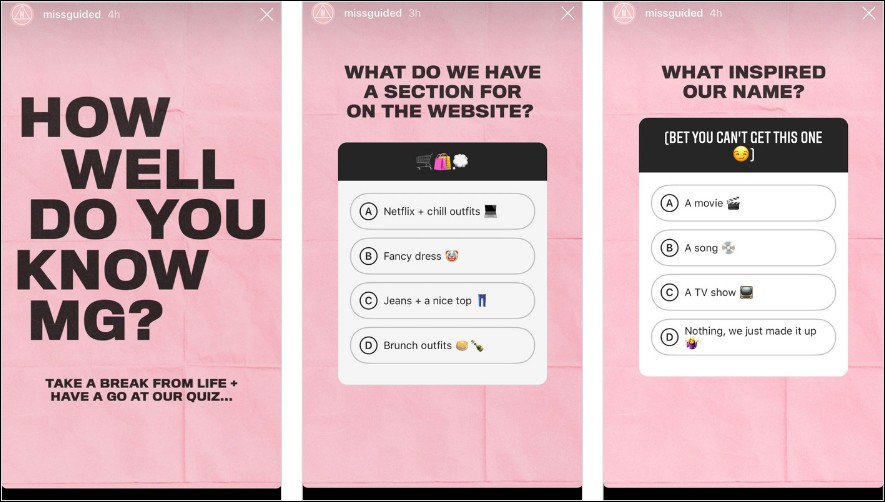
Source: Later.com
3. Engaging With Your Audience
Today, there are dozens of platforms to connect with your ideal target audience. Be it social media platforms or communities on platforms like Discord, ProductHunt, and Clubhouse.
Clubhouse, for example, was shot to fame by its “invite-only” feature. This created a FOMO among people and that’s exactly what creators, marketers, and entrepreneurs leverage.
Startup founders can take a trick or two from the books of folks who joined the Clubhouse bandwagon.
- Build your product in front of your audience.
- Don’t be a laggard when adopting new technologies and platforms.
When you share your experiences, both good and bad, with your audience, you essentially show your vulnerable side to them. As you grow and learn from your mistakes in front of this community, the chances of them supporting you with your initiative increase manifolds.
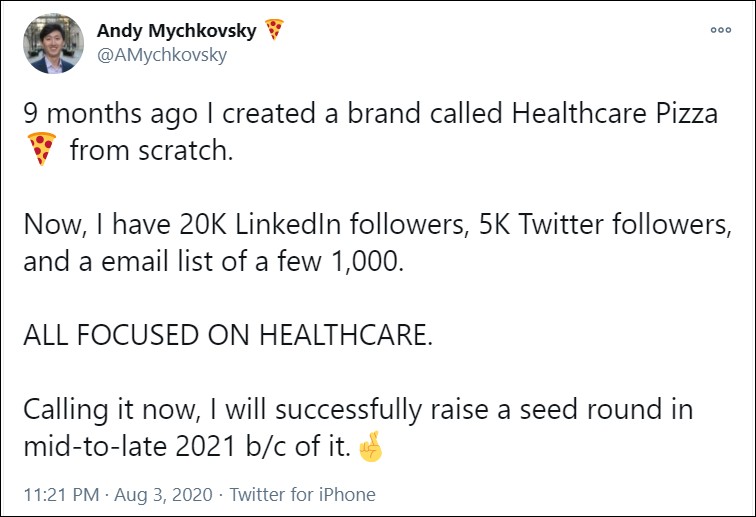
Source: Twitter
4. Deep Link Social Accounts
Deep links are a great way to reduce bounce rates from your social media accounts, landing pages, in-app pages, and web pages.
Simply put, if you add a YouTube video link to your Instagram bio it’ll route to the web version of YouTube – requiring the viewer to signup to drop a comment, like a video, or subscribe.
A deep link on the other hand will lead to an in-app video – making the entire process frictionless.
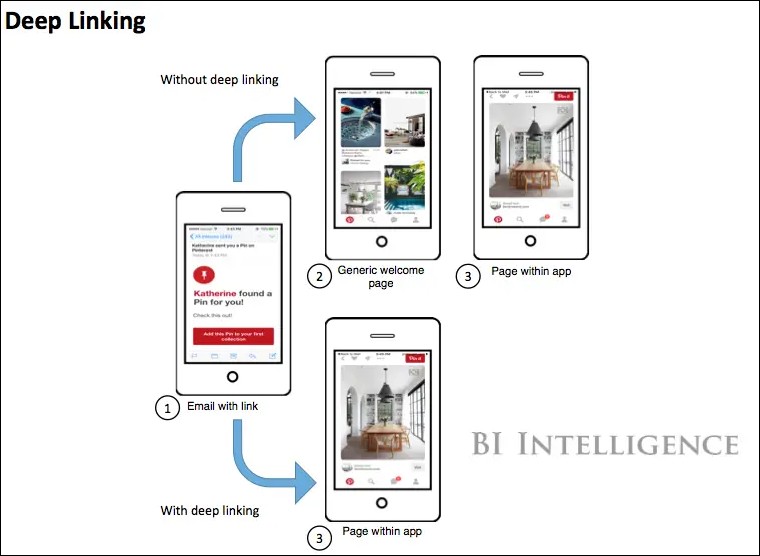
Source: Business Insider
5. Build a Negative Keyword list
A wrong keyword in your ad copy can lead to unqualified leads; costing you a lot on your retargeting campaigns. For example, if you sell an online calendar, you wouldn’t want people looking for an offline calendar to click on your PPC ads. Adding words like – table calendar as a negative keyword on your AdWords will tell Google what you’re not ranking for.
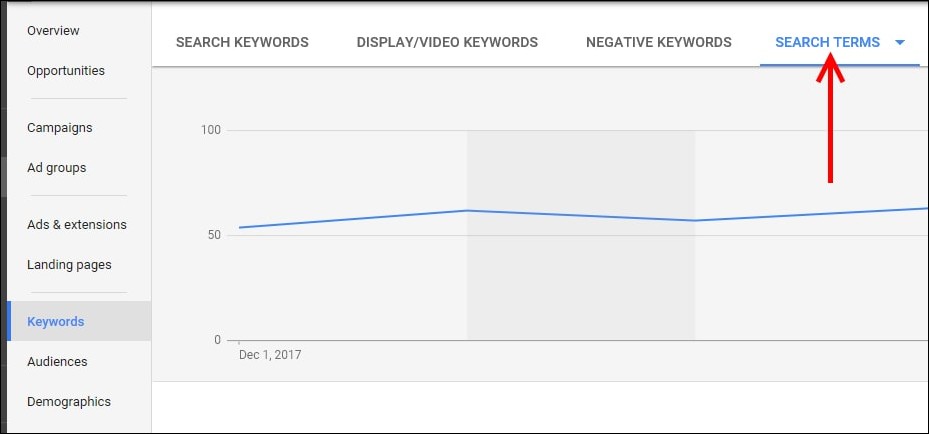
Source: PracticalCommerce.com
6. Email Drip Course
Did you know? Companies that excel at drip campaigns generate 80 percent more sales at 33 percent lower costs. Now that’s not a figure you can easily ignore. Email drip campaigns essentially help you to automate your email marketing by setting up a campaign that sends a series of emails over a period of time. Ideally, till a point where the customer gets interested enough to start a trial or get on a call.
An email drip campaign idea that has been working like magic off late is starting a course on your email marketing. Say suppose you offer a content marketing service, your email drip campaign can cover one chapter a week (or day, depending on the frequency of your emails) explaining your niche and how you can help them. This will hook the readers to see the campaign through to the end.
As the campaign reached its end, you can repurpose these emails in the form of an ebook, or encourage them to start a free trial or get on a call.
This tactic works very well compared to a standard email or course because it is difficult to stick to the end of an ebook or a course. On the other hand, we check our emails every day, so one email a day is not burdensome.
7. Celebrate User Milestones
Celebrating client wins is a great growth hacking tactic for the retention stage of the growth hacking funnel. Suppose, you’re a landing page tool – celebrate the client’s first published landing page. Remind them how far they have come. Incorporate pop-up messages that are triggered on the first or 10th publish and see the results.
8. Pre-Launch Campaigns
This growth hacking tactic is especially for startups. Pre-launch campaigns and invite-only campaigns for the beta version of a product is a timeless growth hacking techniques. It creates FOMO as it is only for a select few and at the same time – it allows the creators to make any necessary changes that may arise during this testing phase.
Pre-launches can be done on ProductHunt, Reddit, and other such platforms.
9. In Stock Reminder Mail
One of the best growth hacks for eCommerce platforms is a mail that is triggered once a product viewed by a potential customer which was initially out of stock is in stock again.
This works as a reminder – almost luring the customer back to purchase the item they once wanted. Also, don’t forget to add an enticing CTA to take them directly to your buying page.
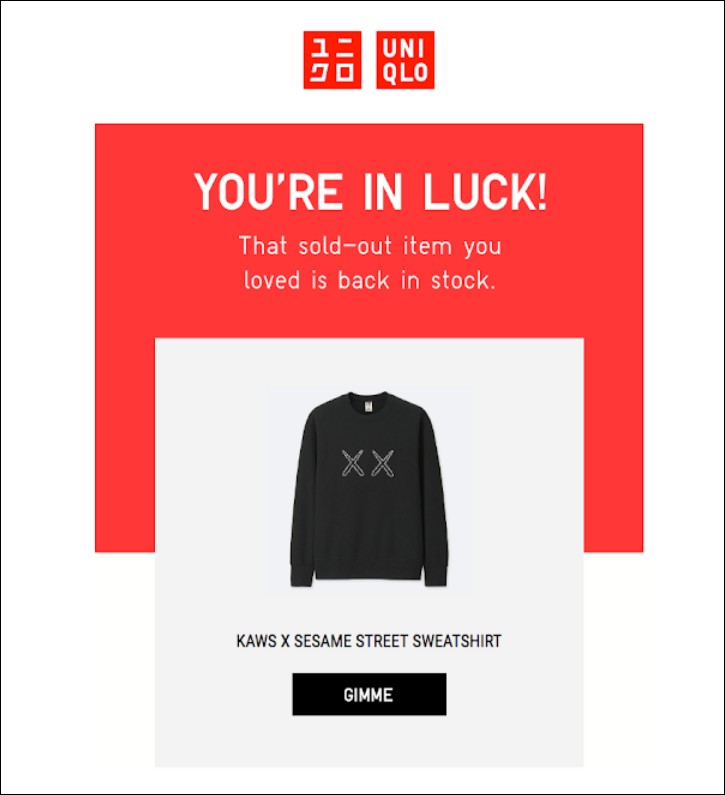
Source: UNIQLO
10. Page Loading Speed
Stop and pay attention to this because this growth hacking tactic could be your savior.
53% of mobile users leave a site that takes longer than three seconds to load. Do not take this for granted. You must optimize your page for all devices because a faster page load implies – more pages are viewed which in turn leads to a good user experience. This also increases the chances of them dropping by again.

Folks, you have done it! You have reached the last leg of this growth hacking course. Here, you’ll find some fantastic tools that you can start using today to hack your growth.
Growth Hacking Course: Chapter 6
Growth Hacking Tools
With the growing demand for growth hackers, the need for intuitive growth hacking tools is also on the rise. We give you some super useful growth hacking tools that you should invest in, today.
1. Outgrow
Among the list of incredible growth hacking tools, how could we have missed Outgrow? For those of you who are unaware, Outgrow offers interactive experiences such as quizzes, calculators, chatbots, eCommerce recommendations, surveys, assessments, and forms. Interactive content boosts engagement, gets you qualified leads, and provides a unique and valuable user experience.
Interactive content on landing pages, as part of ad campaigns, and on website embeds, inherently increases your chances of being chosen against your competitors. Still not sure? Check out this ROI calculator we created.
Source: Outgrow
2. Leadfeeder
This growth hacking tool shows you the companies visiting your website, how they found you, and what they’re interested in. It’s a great way to stay ahead of your competitors by reaching out to high-value clients first once they’ve visited your profile. Additionally, you get to know what they are looking at so you can retarget them or create a funnel to trigger a personalized email highlighting exactly that.
3. Expand.io
If you are a B2B business we have a growth hacking tool for you that’s going to blow your mind.
Expand.io is a tool for Linkedin automation. Through this, you can automate the process of warming up your leads and create a funnel for your retargeting campaigns. It offers a bunch of other features including personalized gifs. Head over to their website to learn more.
4. Crystalknows
This growth hacking tool is a personality analyzer that can be used for your next company pitch, hiring process, or even to beat your competitors.
With generic information from search engines, there is only so much you can impress your clients with. But with Crystal’s Linkedin extension, you get deeper insights into what the person is like and how they’d react to certain words. They even give you an email template based on the person’s personality that has a better chance of converting. How insane is that!
5. Similarweb
Similarweb allows you to keep a close watch on your competitors. From what keywords they are ranking for to keywords in their ads to their growth pattern and where most of their audience is coming from. You can get insights into everything and plan your next course of action.
It’s all the website intelligence packed in one tool.
6. Sentione
This growth hacking tool helps you to listen to what customers are talking about you on various platforms. You get to know the consumer sentiment around your brand. Additionally, it offers crisis management services by providing instant responses, personalized workflows, etc.
It has some renowned clients in its bucket including brands like Nivea and Ogilvy.
7. IFTTT
This growth hacking tool sets automation that triggers one action after another.
They have some built-in solutions segmented by industry. So, a solution for a fintech company would be to trigger an investment whenever you make a purchase. Here, the act of purchasing forms the basis for triggering the act of investing. IFTTT helps you set up this automation.
Now that we have covered some magical growth hacking tools that are going to make your life as a marketer a little easy, we have come to the end of this mini growth hacking course.
Conclusion
This growth hacking mini-course is meant to get you started on your growth hacking journey. Be unafraid and chalk down your priorities. Take a keen look at the data and experiment till you find a hack that lays you golden eggs! But before that, go drop a comment and let us know which growth hack you are going to try out first thing today! And, since you’re here, how about you take a free trial and start your journey with Outgrow’s interactive content to skyrocket your sales?

Yeshaswini is a full-time digital marketer at Outgrow. She loves researching and experimenting with her marketing campaigns. But on most days you’ll find her obsessing over aesthetic imagery and blueberry cheesecake.




